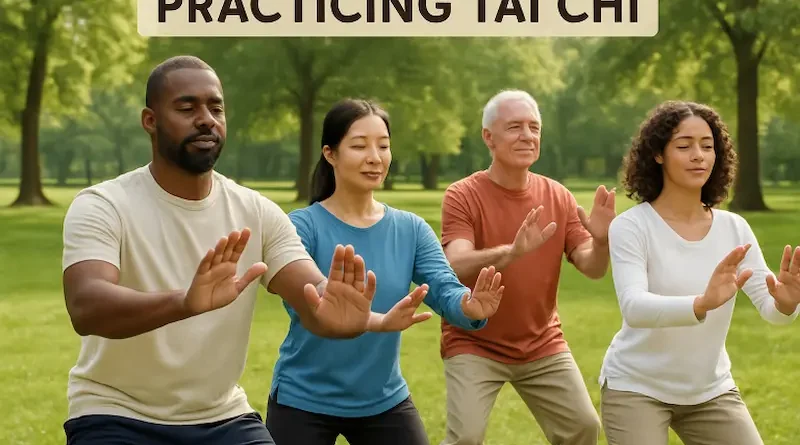The Role of Mindfulness in Chronic Pain Relief Through Tai Chi
Introduction to Tai Chi and Mindfulness
Tai Chi, a centuries-old Chinese martial art, is widely recognized for its slow, meditative movements that harmonize the body and mind. The philosophy behind Tai Chi emphasizes mindfulness—a practice of focused awareness and presence, which helps practitioners cultivate a deeper mind-body connection. This union of movement and mindfulness fosters serenity, balance, and resilience, making it well-suited for those seeking relief from daily stressors and persistent pain. For beginners eager to immerse themselves in these practices, readily available resources like in-depth Tai Chi videos can be invaluable aids on the journey to improved health and well-being.
Mindfulness in Tai Chi involves directing attention to each breath, movement, and sensory experience as they happen. By slowing down and moving intentionally, individuals create space to observe their internal state, breaking habitual patterns of tension or stress that may worsen chronic discomfort. As both a meditative and therapeutic form of exercise, Tai Chi continues to attract those searching for natural and holistic approaches to health.
Understanding Chronic Pain and Its Challenges
Chronic pain lasts for weeks, months, or even years, and is often defined as pain that persists for 12 weeks or more. It affects millions globally, limiting physical activity, reducing work capacity, and profoundly impacting emotional health. Unlike acute pain, which serves as a protective signal, chronic pain can persist despite treatment and may become disconnected from any clear underlying cause. This can leave sufferers feeling frustrated, isolated, and anxious, as traditional pain management strategies sometimes fail to provide adequate relief or come with unwanted side effects.
Living with chronic pain often means coping with not only physical symptoms but also emotional and psychological burdens. Depression, sleep disturbances, and increased stress are commonly reported among chronic pain patients, making comprehensive management essential.
How Mindfulness Influences Pain Perception
Mindfulness-based practices, including Tai Chi, have been shown to alter how the brain perceives and processes pain signals. Mindfulness encourages pain acceptance rather than avoidance or catastrophic thinking by bringing conscious attention to bodily sensations without judgment or reaction. This mental shift can lessen pain intensity and its emotional impact—helping individuals break free from cycles of distress and worry that amplify discomfort. Studies suggest that mindfulness may dampen activity in regions of the brain linked to pain and emotional suffering, fostering increased tolerance and emotional regulation.
Tai Chi as a Mindfulness-Based Intervention
Tai Chi integrates the principles of mindfulness directly into movement, offering a practical, embodied meditation for those living with chronic pain. Each motion in Tai Chi is performed with deliberation, ensuring that participants focus solely on the present moment—their breath, posture, and fluidity of movement. This repetitive, mindful practice improves flexibility, balance, and muscle strength and cultivates awareness and self-compassion, both of which are essential for effective pain management.
As a gentle, low-impact activity, Tai Chi is accessible to people of varying ages and physical conditions. Its adaptable nature means movements can be modified to accommodate individual abilities and pain levels.

Scientific Evidence Supporting Tai Chi for Pain Relief
Recent scientific research supports Tai Chi’s effectiveness as a non-pharmacological intervention for managing several chronic pain conditions. Systematic reviews and meta-analyses highlight immediate and sustained pain relief for individuals with osteoarthritis, lower back pain, and osteoporosis when practicing Tai Chi regularly. Additionally, many participants in these studies report diminished pain and significant improvements in mood, mobility, and overall quality of life.
Incorporating mindfulness in Tai Chi is believed to regulate the nervous system and promote neuroplastic changes in brain regions associated with emotional processing and pain perception, further amplifying its therapeutic effects.
Incorporating Tai Chi into Daily Life
Beginning a Tai Chi practice is straightforward and rewarding. Here are practical steps to add Tai Chi to your wellness routine:
- Find a Qualified Instructor: Look for certified Tai Chi teachers who offer classes suited to all experience levels and physical conditions.
- Start with Basic Movements: Begin with foundational forms and routines, focusing on alignment and mindful breath.
- Practice Consistently: Aim to dedicate at least two weekly sessions to maximize the potential benefits of Tai Chi.
- Integrate Mindfulness Practices: Pair your Tai Chi sessions with brief mindfulness meditations to enhance your sense of presence and overall awareness.
Online communities and in-person classes provide valuable opportunities for practice, encouragement, and education.
Additional Resources for Learning Tai Chi
There are abundant high-quality resources to help you learn more about Tai Chi and mindfulness. From instructional videos and guided routines to articles and support groups, these materials make exploring practices that suit your needs and goals easier than ever. Leveraging these tools, you can develop a structure that empowers you to pursue greater pain management and general well-being at your own pace.
Final Thoughts
Embracing Tai Chi as a mindfulness-based practice offers significant promise for those searching for chronic pain relief. By harmonizing slow, mindful movement with deep awareness, individuals can improve mobility, lessen pain, and cultivate emotional resilience. Integrating Tai Chi into daily life represents a method for managing symptoms and a path to a more balanced, fulfilling existence.
Visit the rest of the site for more interesting and useful articles.

